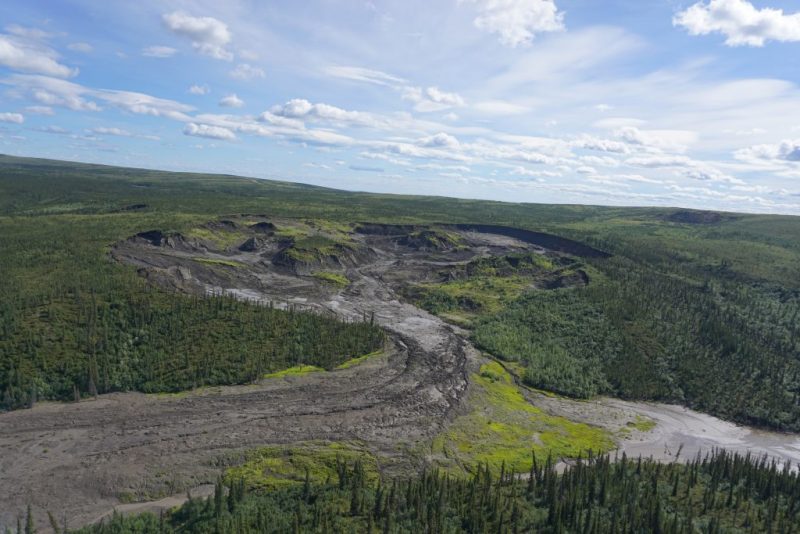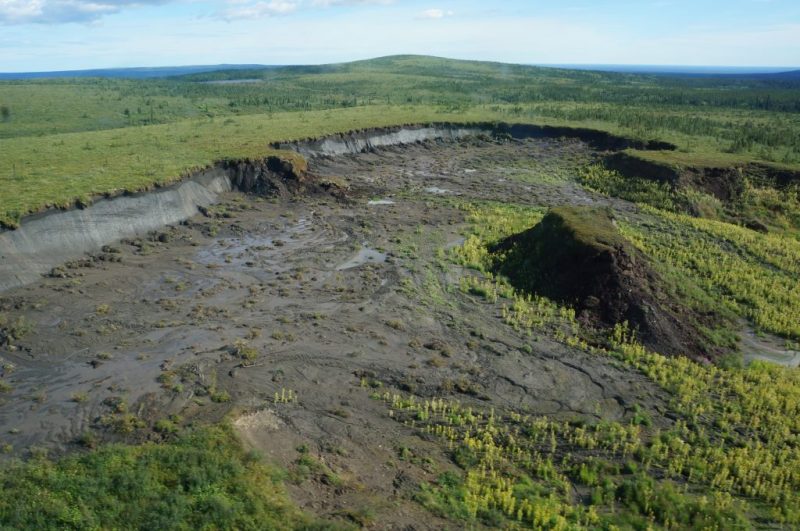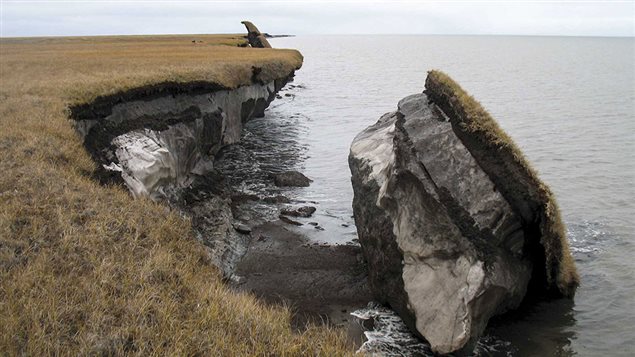Global warming will thaw about 20 per cent more permafrost than previously thought, according to a new international research study.
The study, published in Nature Climate Change, suggests that as the planet warms toward two degrees Celsius above preindustrial levels nearly 4 million square kilometres of frozen soil – an area larger than India – could be lost for every additional degree of global warming experienced.
“Previous estimates of global changes in permafrost were done using climate models,” Sarah E. Chadburn, a researcher at the University of Leeds in England and the lead author of the study, told the New York Times. “Our approach is more based on using historical observations and extrapolating that to the future. It’s a very simple approach.”
Permafrost is frozen soil that has been at a temperature of below 0 C for at least two years. Large quantities of carbon are stored in organic matter trapped in the icy permafrost that can be hundreds of meters thick. When permafrost thaws, the organic matter starts to decompose, releasing greenhouse gases such as carbon dioxide and methane, which in turn leads to increases in global temperatures.

Large thaw slump on the Peel Plateau, NWT, Canada. The slump is almost 1 km wide and has displaced over 7 million cubic metres of materials over the past two decades. (Steve Kokelj/NWT Geological Survey)
Stabilising the climate at 2C above pre-industrial levels would lead to thawing of more than 40 per cent of today’s permafrost areas, which cover a surface area of about 15 million square kilometres, the study warns.
“A lower stabilisation target of 1.5 C would save approximately two million square kilometres of permafrost,” Chadburn said. “Achieving the ambitious Paris Agreement climate targets could limit permafrost loss. For the first time we have calculated how much could be saved.”
Thawing permafrost has potentially damaging consequences, not just for greenhouse gas emissions, but also for the infrastructure located in high-latitude cities. It could also dramatically alter northern landscapes, according to a recent Canadian study.
Roughly 35 million people live in the permafrost zone. A widespread thaw could cause the ground to become unstable, putting buildings and critical infrastructure at risk of collapse.
Recent studies have shown that the Arctic is warming at around twice the rate of the rest of the world, with permafrost already starting to thaw across large areas.

Thaw slump on Peel Plateau. (Steve Kokelj/NWT Geological Survey)







For reasons beyond our control, and for an undetermined period of time, our comment section is now closed. However, our social networks remain open to your contributions.